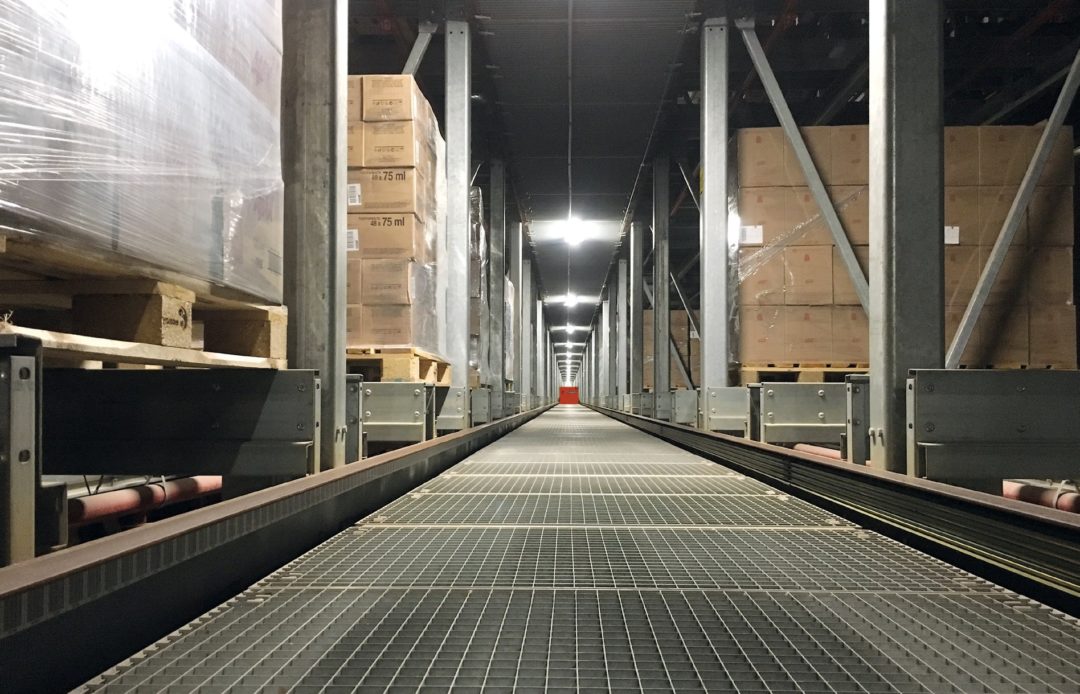The advantages of automated storage and retrieval systems (AS/RS) are growing, almost as quickly as the systems are increasing in popularity as a tool for storage and fulfillment in a variety of industries.
To ensure optimal outcomes – outcomes that protect the product and optimize the company’s packaging investment – warehouses need to better automate their processes. A technology evolution is taking place in two areas – in the equipment itself – and in the warehouse management software that integrates the automated lines with legacy systems.
The more automated your operation is, if it’s designed, deployed, and maintained properly, the more control you have over costs related to labor, spoilage, and material handling, as well as the costs associated with maintaining temperature control in large facilities.
For those looking to increase output, scale up or down according to demand, and integrate with enterprise resource planning systems (ERPs) and other systems, an AS/RS may be a good fit.
Let’s take a closer look at the benefits.
Increased Output
Installing an AS/RS equates to using the latest technology to integrate warehouse management systems (WMS) and ERP systems to optimize warehouse efficiency, resulting in increased output.
Using a single point of contact for automated warehouse controls, as well as real-time data collection and query solutions, increases efficiency. In addition, by providing instantaneous status and user input, as well as carton tracking and auditing, your facility runs more smoothly.
A high-density order management system is more flexible than a traditional crane-based or radio shuttle rack system, allowing higher throughput. Pallets and crates can be moved through more quickly. In addition, these systems can often be installed to follow the contours of existing buildings, which eliminates the need for new construction. Their unique design allows pallets to rest on the cart platform, eliminating handling complications from broken boards, wrap tails, etc.
Another benefit is that modern systems are built with standard industrial components, making them faster to repair when they go down. Downtime should be minimal because parts are easier to get. Repair costs are also lower.
Flexibility
Flexibility can also play a role in choosing what type of system to install. An AS/RS provides greater flexibility for many businesses.
As distribution centers are built more frequently in urban and suburban areas, real estate becomes more expensive, and available space may be limited. This makes it all the more important to be able to build taller facilities. With an AS/RS, shelves can be stacked as high as needed. The system can be configured to address high shelves without endangering employees who have to operate equipment to retrieve pallets.
The modular systems offer maximum storage capacity with the highest throughput and the smallest footprint. In addition, more modules can be added, as capacity requirements and SKUs increase.
An additional advantage of a modular system is the ease with which it can be adjusted. Demand can fluctuate. If buying trends shift, your facility may need to scale up - or down - accordingly. With a modular system, you can change as fulfillment needs change. With an AS/RS, the entire warehouse can be optimized based on volume. The order mix can be adjusted as conditions dictate.
Integration
Integrating equipment advancements with transactional activities is vital. It continues to evolve. Track and trace technology allows transparent insight into where every pallet is and when it arrived. Each can now be traced all the way to the end customer.
Traditional rigid, heavy warehouse automation systems can be challenging to integrate into existing facilities, requiring facility modification to accommodate them. The ultra-high density storage capacity of a more modern system allows for variance in building layout, design and volume, while providing greater storage capacity and flexibility with Brownfield sites.
Remember that simply moving faster doesn’t equate to higher throughput. If the system is designed to be integrated with your existing systems, it will be more effective. Your warehouse system is part of your complete transaction system, including your inventory management system. An AS/RS can be optimized based on the likelihood of that item needing to be retrieved.
Is an automated storage and retrieval system for you?
An AS/RS provides a number of benefits for today’s modern facility. However, before investing in any major equipment purchase, be sure to consult an expert who can advise you on systems that may be the best fit for your needs.
Work with a partner that offers more than one type of automation solution – a partner that will help you scale up to full automation if that’s your goal. Always consider the next part of your journey as you make your decision.

